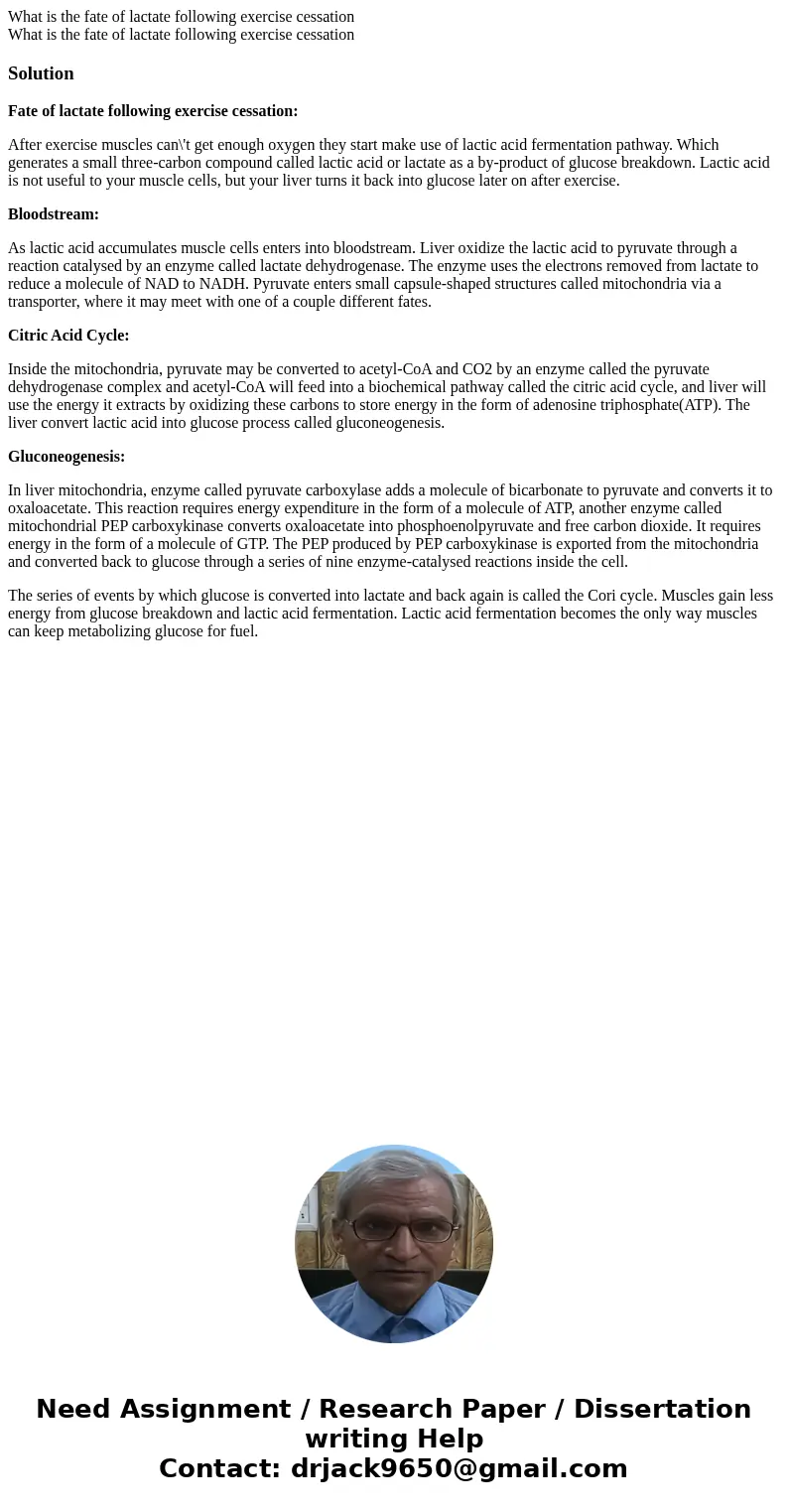What is the fate of lactate following exercise cessation Wha
Solution
Fate of lactate following exercise cessation:
After exercise muscles can\'t get enough oxygen they start make use of lactic acid fermentation pathway. Which generates a small three-carbon compound called lactic acid or lactate as a by-product of glucose breakdown. Lactic acid is not useful to your muscle cells, but your liver turns it back into glucose later on after exercise.
Bloodstream:
As lactic acid accumulates muscle cells enters into bloodstream. Liver oxidize the lactic acid to pyruvate through a reaction catalysed by an enzyme called lactate dehydrogenase. The enzyme uses the electrons removed from lactate to reduce a molecule of NAD to NADH. Pyruvate enters small capsule-shaped structures called mitochondria via a transporter, where it may meet with one of a couple different fates.
Citric Acid Cycle:
Inside the mitochondria, pyruvate may be converted to acetyl-CoA and CO2 by an enzyme called the pyruvate dehydrogenase complex and acetyl-CoA will feed into a biochemical pathway called the citric acid cycle, and liver will use the energy it extracts by oxidizing these carbons to store energy in the form of adenosine triphosphate(ATP). The liver convert lactic acid into glucose process called gluconeogenesis.
Gluconeogenesis:
In liver mitochondria, enzyme called pyruvate carboxylase adds a molecule of bicarbonate to pyruvate and converts it to oxaloacetate. This reaction requires energy expenditure in the form of a molecule of ATP, another enzyme called mitochondrial PEP carboxykinase converts oxaloacetate into phosphoenolpyruvate and free carbon dioxide. It requires energy in the form of a molecule of GTP. The PEP produced by PEP carboxykinase is exported from the mitochondria and converted back to glucose through a series of nine enzyme-catalysed reactions inside the cell.
The series of events by which glucose is converted into lactate and back again is called the Cori cycle. Muscles gain less energy from glucose breakdown and lactic acid fermentation. Lactic acid fermentation becomes the only way muscles can keep metabolizing glucose for fuel.

 Homework Sourse
Homework Sourse